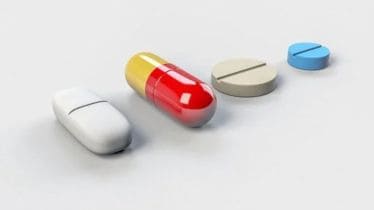By Suman Sharma
Observed for the first time in 1970, World Earth Day is the largest global environment movement. This year’s Earth Day calls for governments, institutions, businesses, and the citizens to invest in the planet for a stable and sustainable future. As we slowly emerge from the pandemic, this year’s Earth Day assumes even more significance. The pandemic highlighted the delicate interlinkage between positive public health outcomes and economic stability. While economic progress is key for development, it must be sustainable. We cannot ignore that the future of the planet is at cross-roads due to accelerated climate change, rapid urbanization, unsustainable consumption and production and increased pollution of natural resources. The problems of the planet affect everyone, and therefore require collective and immediate solutions.
Rising antimicrobial resistance (AMR) is one such problem that beckons greater collective action at global, national, and sub-national levels. Micro-organisms mutate and evolve over time as a part of natural process, but overexposure to chemicals like antibiotics can accelerate the process. Subsequently, these micro-organisms develop AMR to the drugs that could neutralize them which leads to protracted hospital stays and higher mortalities. AMR has been rising globally. In 2022, the Global Antimicrobial Resistance and Use Surveillance System (GLASS) report reveals high rates of AMR in the micro-organisms that generally cause hospital-acquired infections. Further, as per a study published in the Lancet, over 1 million lives were lost directly because of AMR in 2019
While various global and national action plans have been drawn out for the containment of AMR, mitigation is a challenge because AMR has multiple drivers spread around the animal, human and environmental ecosystems. The spread and emergence of AMR accelerates due to overconsumption and improper disposal of drugs and misuse of drugs in livestock, poultry, and aquaculture. Importantly, AMR also increases when untreated effluents from farms, healthcare facilities, and industries, including pharmaceutical clusters, are released directly into the water bodies. These effluents, which contain residues of antibiotics and other pharmaceuticals, pollute the environment, and ultimately contribute to the build-up of AMR. Increasing pharmaceutical pollution has been reported globally. A study led by researchers at the University of York revealed that out of over 1000 samples, the most contaminated samples originated from African and Asian countries. Worryingly, this trend has been observed in India too. The National Green Tribunal (NGT) – a specialized judicial body for environmental cases intervened when the issue of pharmaceutical pollution of the Sirsa river flowing through a major pharmaceutical hub in Himachal Pradesh was brought to its attention.
The pharmaceutical industry must play a key role in curtaining antibiotic emissions. The need of the hour is to invest and innovate in cutting-edge technology to bring down the concentration of antibiotic residues in the wastewaters of their manufacturing units. Some companies including Centrient Pharmaceuticals have already been on a quest to remove antibiotic residues from their wastewater by investing in cutting-edge technology and adopting frameworks like the Common Antibiotic Manufacturing Framework (CAMF). The CAMF stipulates safe discharge values for antibiotic manufacturing. If the threshold of the antibiotic residue in the wastewater is below the safe discharge value that antibiotic is unlikely to promote AMR. While majority of the companies that are part of the AMR Industry Alliance (AMRIA) (one of the largest private sector coalitions of biotech, diagnostics and pharmaceutical companies) meet the requirement of the CAMF, such frameworks need greater endorsement by the wider pharmaceutical sector.
Along with responsible manufacturing, industry must also ensure that the raw materials procured are from clean sources. There is also merit in the introduction of awareness programs for the suppliers to align them with responsible supply chain practices. Some governmental agencies in Norway and Sweden are already incentivizing responsible manufacturing when they procure antibiotics from suppliers. The suppliers that document responsible production practices can have a greater likelihood of being selected for procurement. There is a glaring need for such instruments to be deployed in countries like India, where the healthcare sector continues to expand. Incentivization of clean procurement would also catalyze India’s progress on the Sustainable Development Goal 12 – responsible consumption and production.
The clock continues to tick, the time for action is now. AMR may have been dubbed as the silent pandemic. However, it will have a visible impact on the socio-economic fabric of the planet. Estimates suggest that yearly mortalities can rise to 10 million deaths every year along with an economic damage of around 10 trillion USD. Governments, institutions, businesses, civil society organizations and the citizens must join hands to usher in a healthy and green economy and avert the silent pandemic of AMR. Governments across the globe need to devise a surveillance and monitoring framework that incentivizes clean production. On the other hand, business should pursue profitability and sustainability simultaneously.
(The author is a Director for Sustainable Antibiotic Manufacturing, Centrient Pharmaceuticals. Views expressed are personal and do not reflect the official position or policy of the FinancialExpress.com.)
